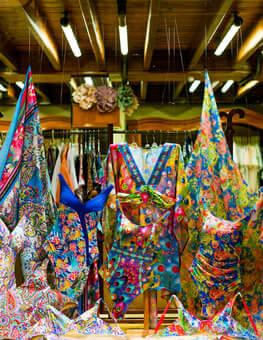Fashion has had a huge impact on culture since the beginning of human history. The importance of fashion first reached legal protection in France in the eighteenth century by means of a national royal decree protecting silk manufacturers. Later, the fashion industry evolved into the haute couture, born in Paris in the nineteenth century at the time of industrialization, which coexisted in the market together with ready-to-wear clothing. On the other hand, industrialization helped design piracy to quickly appear, by copying the fashion clothing designs and selling their knock-offs in the mass market. At this point, in order to fight the counterfeiting activity in the nineteenth and the twentieth century, fashion designers sought intellectual property protection. It first started in Paris, the world fashion capital, by relying on French copyright law and industrial design law as well as license agreements between the designers and the foreign retailers as national laws were not applicable in international trade.
Nowadays, a gap can be seen between the European and the US intellectual property protection system. The main concern regarding clothing designs is that they are of double nature: they may have a functional purpose and may be, at the same time, a creative expression (aesthetic). The latter results in a seasonal product whose nature cannot find full protection in the US legal system where copyright and patent law do not strictly accommodate to clothing designs characteristics. First, US copyright law relates to the artistic nature but not the functional aspect of the clothing product; and second, US patent law includes some requirements which are difficult for clothing to met, following a prior examination stage in registration proceedings, as a temporal fact which can affect the seasonal nature of clothing designs. Therefore, and given such scenario, fashion designers also opted for extralegal means such as social control (social disapprobation) and technological means (for example, RFID) to prevent copyists to keep up with their activities. This situation leads designers to rely on US trade mark law by attaching their logos and names to the clothes. This option, while being rather a patch than a complete protection for clothing designs, is only affordable for established fashion companies, which can take advantage of their social recognition, unlike emerging designers still unknown in the market. Furthermore, there is a type of trade mark protection called “trade dress” which protects the overall appearance of the product insofar the design causes a “secondary meaning” in the consumers’ mind; that is to say, when the consumer acknowledges its commercial origin. All in all, the result is a partial protection for clothing designs in the US as only certain elements may be protected due to the lack of specific regulation.
Unlike the US IP law, European Design Law (the “Community Design Regulation”) automatically protects designs, without the need of any formal registration or filing, once they have been disclosed in the relevant territory through, for example, first sell, online commercialization, etc. It represents a clear advantage for fashion designers who decide to enter the EU market, as they will not be limited to trade mark or copyright law, having the option to opt for the three year’s protection of unregistered EU design tool. This unregistered protection perfectly matches the seasonal nature of clothing designs as there will be no need to undertake a registration process (which can imply some time and costs). The unregistered design protection is, however, limited in time (only 3 years from disclosure) and scope (it only protects against identicalcopies). If the designer wishes a longer (up to 25 years) and stronger ( also against similarproducts) protection, there is still the option to obtain a Registered Community Design, which will be quickly granted by the European Union IP Office (EUIPO) without any substantial examination and at a very affordable price. For more legal information for designers please click here or email here fashionlaw@ipwisely.com .
Authors:
Riccardo Ciullo
Miriam Santin




